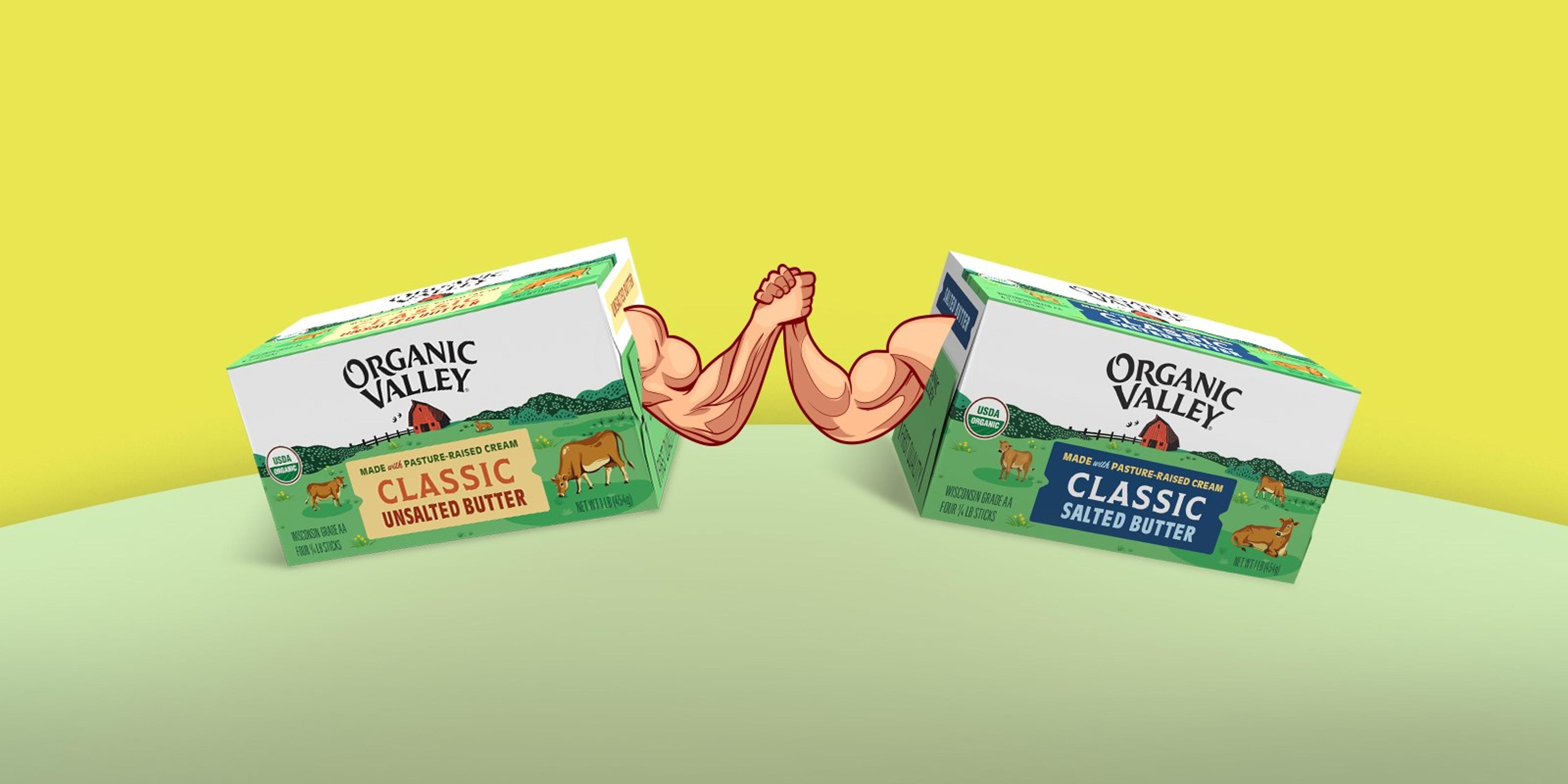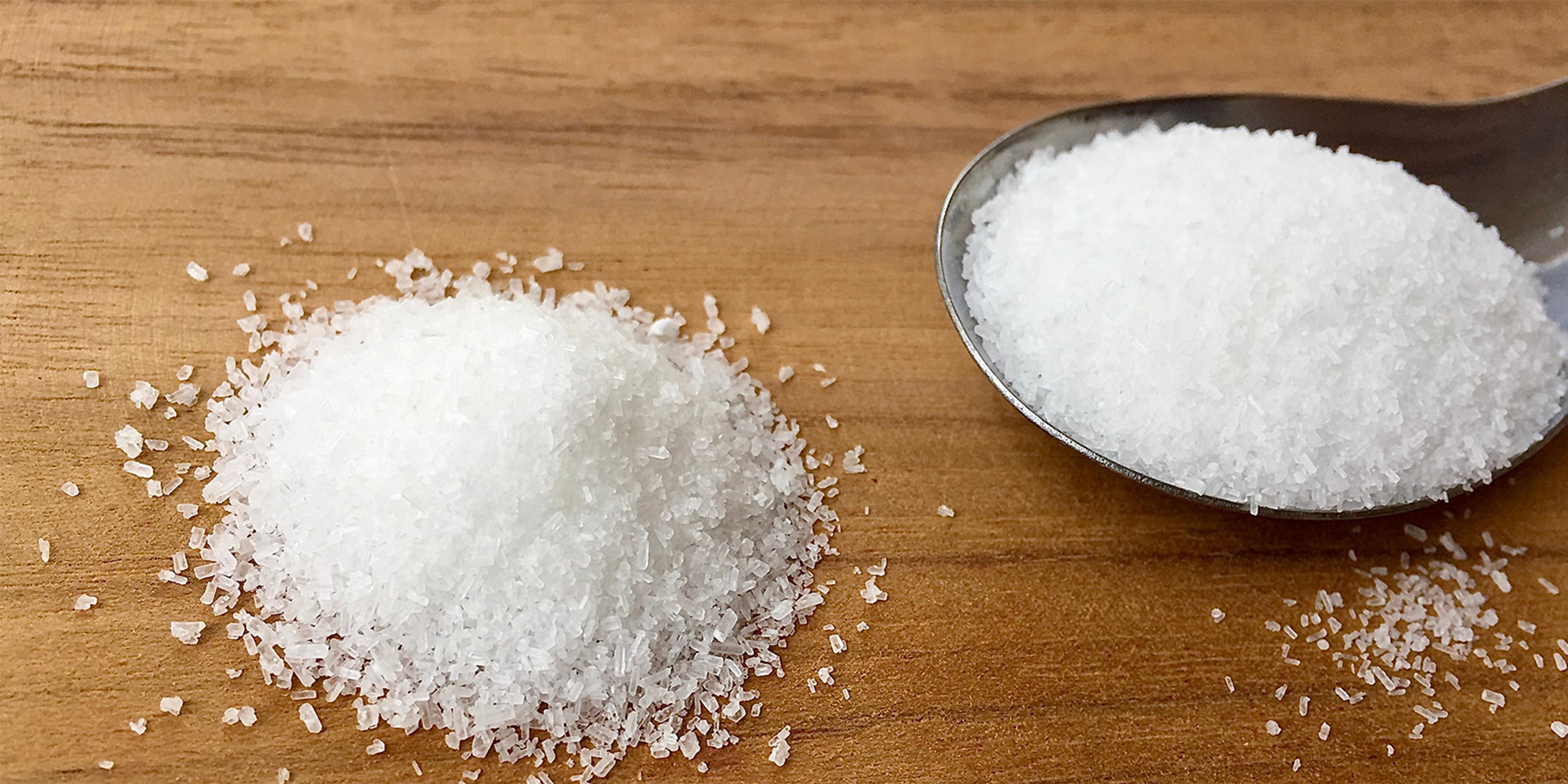
Food
Salted Butter Versus Unsalted Butter
You’ve got your mixing bowl and ingredients ready and are all set to try out a new recipe for chocolate chip cookies that you found online. You pull up the recipe and find that it calls for unsalted butter. You sigh as you realize that you only have salted butter in your fridge. Can the salted butter be substituted? Why does the recipe call for unsalted butter over salted butter, and what’s the difference between the two?
Using unsalted butter and adding your own salt gives you control of the exact amount of salt that goes into a dish or baked good.
While recipes for baked goods can vary, you may have found that a lot of bloggers and cookbook authors will specifically call for unsalted butter in recipes. To put it simply, the amount of salt in salted butter varies by brand. To control the amount of salt in a baked good, many recipe creators will call for unsalted butter and add salt to the recipe separately.
Let’s take a deep dive on the difference between salted and unsalted butter, and what it looks like to substitute one for the other in baking.
Differences in Salted and Unsalted Butter
The primary difference between salted and unsalted butter is just as it sounds, the amount of salt. Unsalted butter contains no added salt, while salted butter has added salt to increase its shelf life and alter the taste.
Organic Valley Salted Butter contains two ingredients: organic sweet cream and a pinch of salt. That’s it!
One reason that salt is added to butter is to use it as a preservative to increase shelf life. Most brands of salted butter contain between 600 and 900 mg of sodium, or about ¼ to ½ of a teaspoon of salt, per stick.
Unsalted butter contains some sodium, said Sam Barton, Organic Valley senior food technologist. Since the milk solids in butter naturally contain sodium, there is a small amount that makes its way into unsalted butter. The amount is negligible, though, and therefore not listed on the unsalted butter nutrition facts on the package.

Salt in Butter Varies by Brand
Brands can vary when it comes to the amount of added salt in their butter. Organic Valley salted butter has approximately 600 mg or ¼ teaspoon of sodium per quarter-pound (one stick) of butter while other brands of butter contain more than 900 mg or ½ teaspoon of sodium per stick. This means, for example, if you’re making a cookie recipe that calls for two sticks of unsalted butter (like these shortbread cookies) and you use salted butter without adjusting the amount of added salt, you’re potentially adding an entire teaspoon of extra salt. This will certainly alter the taste of your cookies!
The addition of salt to butter also significantly changes the taste. Barton said that any consumer tasting unsalted butter and salted butter side by side is very likely going to be able to taste the difference. Salted butter is typically used for eating as a condiment since the taste is generally preferred. Unsalted butter is best for uses in baking where it will be incorporated with other flavors. Organic Valley offers both salted butter and unsalted butter.
What About Ghee?
Organic Valley Ghee is another great product to add to your pantry! Organic Valley Ghee starts as organic, pasture-raised unsalted butter with 80% to 84% butterfat, then is cooked down to nearly 100% butterfat. The cooking process removes almost all moisture, which also removes salt. The end product is free of salt and great for use in cooking and even baking. Visit this article to learn more about ghee!
The Difference in Shelf Life
Since salted butter has the added preservative of salt, it will have a longer shelf life. Barton said unsalted butter includes lactic acid, which preserves it well enough so that it can be safely stored in the fridge for longer. Check out this article to learn more about how to store butter to preserve its taste, color and nutrients.
Controlling the Amount of Salt
The primary reason that recipe creators will call for unsalted butter is to control the amount of salt in a baked good. The amount of salt in a stick of salted butter varies by brand, so recipe creators would rather control the amount of salt in the recipe by calling for unsalted butter and then adding salt later in the recipe.
Salted butter also contains more water than unsalted butter. Added water in a recipe can potentially alter the gluten-forming process within a baked good, which in turn could negatively impact its final texture and composition (think dense and chewy, not light and fluffy). Impacting the composition of a baked good over salted butter substitution isn’t typically an issue, but it’s something to be aware of (especially if you are making a pastry or other recipe that calls for a lot of butter).
While using unsalted butter is ideal in baking if that’s what the recipe calls for, there are ways to substitute salted butter for unsalted butter (and it’s not just a simple one-for-one swap).

Substituting Salted Butter for Unsalted Butter
The rule of thumb for substituting salted butter for unsalted butter is to reduce the added salt in the recipe by ¼ teaspoon per stick of butter. Most baked goods do need a little salt to enhance the other flavors, but too much can be overpowering.
Reducing added salt by ¼ teaspoon per stick of salted butter will help ensure that your dessert isn’t too salty. Try out these chocolate chip cookies where you could easily substitute salted butter for unsalted butter!
Some recipes will call for salted butter, usually because the author knows that salted butter is what most people will have on hand. The author likely has taken into account the salt in the butter and has called for less added salt in the recipe.
If you were to substitute the other way around (use unsalted butter when salted butter is called for), simply add ¼ teaspoon of salt per stick of butter that is added.

Salted butter makes its way on a conveyor system.
Why Choose Organic Butter?
Differentiating between salted and unsalted butter isn’t the only important factor when choosing your butter. Consuming organic butter reduces your exposure to pesticide residues and environmental toxins. Animals naturally store toxins in their fat cells, increasing the risk of these contaminants finding their way into products we rely on in our diet, such as milk and butter.
Children are especially vulnerable to pesticide exposure, and consuming organic foods can reduce this risk. Organic farmers do not use antibiotics, synthetic hormones, toxic pesticides or genetically modified organisms (GMOs) on their farms, and all animal feed and pasture must be certified organic.
We suggest keeping salted and unsalted butter on hand but if you come up short when you need salted, now you know the remedy.
Use the Organic Valley product locator to pick up whichever butter is best for you! (Bonus: there is a recipe inside every butter package.)
Jackie Thesing is a Minnesota girl, born and raised. She, her husband and three young children live in the Twin Cities area where they love to spend time outside and be together as a family. After leaving her corporate job to stay home with her children, Jackie created a blog, Sweet Girl Treats, to share her favorite recipes and baking tips. When Jackie isn’t busy with the many tasks of motherhood, you’ll likely find her in the kitchen developing new desserts, probably with at least one of her “sweet girls” at her side! Follow Jackie’s baking journey on her Instagram page @sweetgirltreatsmn and subscribe to her blog!
Related Articles
- Tags:
- meal prep,
- high quality products














